“Everything Moves and Changes!”
- Two Countries’ Connection of Senses and Thoughts Overcominng COVID-19,
Something to Be Shared with Four-Year-Olds-
[A Case of Co-Production through the Korea-Sweden Connection < Ne, Ne, Ne >]
There is a production unaffected by COVID-19. The production has transformed the virus, which has greatly influenced our lives with “shutdowns and isolation”, into a driving force that enables diverse forms of experiments of the Connection. The Korea-Sweden co-production ‘Ne, Ne, Ne’ had to face COVID-19 at the end of their three-year journey. Nevertheless, they didn’t stop and kept moving forward and now, they are just about to meet the audience. We met with Kim Min-jung (Korean co-director) and Eom Dong-yeol (CEO of Culture Workshop Sangsang Maru, the production company) who have gone through the tough period of three years together.
Interview Date: Thursday, July 16, 2020
Interview Venue: meeting room at Korea Arts Management Service
Interviewer: Kim Mi-sun (producer)
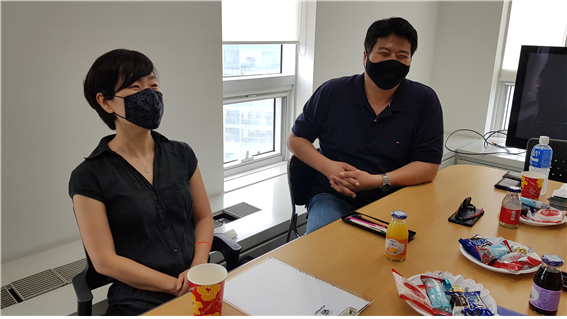
Interview with Kim Min-jung (co-director) (left) and Eom Dong-yeol (CEO of Culture Workshop Sangsang Maru (production company) (right)
ⓒKAMS
Kim Mi-sun: What is the current state of your production and what are you doing right now?
Eem Dong-yeol: We are actively rehearsing the performance that will be presented in Korea. The coronavirus has kept both Swedish and Korean participants from visiting each other. So building on what we have developed through our joint workshops and the rehearsal that took place in February 2020, each country’s participants currently create a performance. We also share our performance videos and work on them to combine them into one performance. For your information, ‘Ne, Ne, Ne’ is a performance with three performers. Initially, the performance in Korea was supposed to have two Korean performers and one Swedish performer. But for the performance at Seoul Arts Center in August 2020, only Korean performers will be there.
Kim Mi-sun: What is the genre of ‘Ne, Ne, Ne’? How would you describe the work?
Kim Min-jung: Its genre is 1)Tanz Theater. It is a complex genre encompassing elements of movements, mime, choreography and games. It is difficult to define the genre in one word and the performance doesn’t have any script.
Eem Dong-yeol: Based on the movements of Sweden’s Zebra Dans (co-production company), Korea’s Sangsang Maru has done some work based on texts. We wanted to try a new model of co-producition by combining the two production companies’ strengths.
Kim Mi-sun: In a collaboration, the two parties’ differences could complement each other but there would have also been many difficulties before finding points of connection. How have you communicated with each other?
Kim Min-jung: The two parties are absolutely different so there have been difficulties arising from such differences. Every time we faced such difficulties, we needed to clarify how we would communicate and what our final destination would be. Nevertheless, we kept having problems throughout the project so we truly realized the importance of communication. So after finishing a week-long joint workshop in October 2019 in Ansan, we communicated with the Swedish co-director Anne Jonsson for three months through emails and video conferences. Through this communication, we elaborated on very detailed collaboration guidelines including a collaboration manual, communication methods and ways to deal with collisions. As there are collisions caused by differences in cultures and genres, we were concerned that we might keep colliding with each other until the end of the production. But thanks to the manual we prepared together, we were able to work together more easily when we had a three-week rehearsal in Seoul afterward.
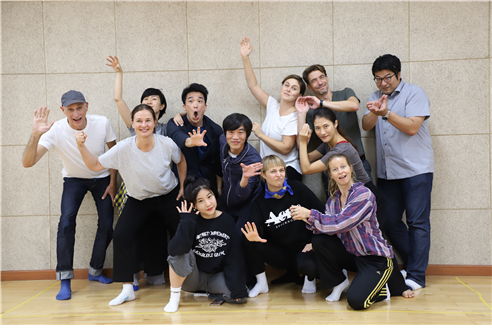
Workshop in Ansan in Ocrtober 2019 ⓒSangsang Maru
Eem Dong-yeol: As a producer, what is the most important in any project has been harmony and understanding among people. Basically on the occasion of participating in the 2)Nordic Connection and having meetings with the co-production company, we had built trust for each other. First of all, during our creative workshop, we found out that Sweden has a culture called “coffee time fika.” Not only those who participated in the creative workshop but all members of the production team talked to each other for a long time through fika and had a chance to know about each other broadly through diverse themes. Second, it was important to understand each other’s work. We took time to monitor works by Zebra Dans. Third, the co-directors gave presentations with keywords from the creative workshop in order to share their production plan more clearly.
Kim Mi-sun: I’m curious about how you have worked so far. Could you explain in more detail how you have rehearsed and what your performance plan is?
Kim Min-jung: In Augugst 2019, me and the Swedish director Anne Jonsson organized the creative workshop. We then selected Swedish and Korean performers through an audition and they participated in a five-day workshop in Ansan in October 2019. After that, performers rehearsed in each country separately for three months, communicating through emails and online video conferences. In February 2020, the Swedish performers and director came to Korea. After rehearsing in Korea for a while, they had to go back to Sweden urgently due to COVID-19. We had planned a six-week rehearsal: three weeks in Seoul and three weeks in Stockholm. But because of COVID-19, performers had to cover the rehearsal plan in their respective countries and in April, each of the parties gave a 25-minute online presentation and discussed how to combine their performances into one work. We are currently rehearsing for the performance that will be presented at Seoul Arts Center in August. It has been a very long journey.Eem Dong-yeol: We had initially planned to finish our rehearsal in Stockholm, Sweden in April this year and to cover the following schedule: ten shows, a performance at the Bibu Festival in North Europe in May (official invitation) and a tour in Sweden in September. Participating in the Nordic Connection for three years and planning performances for long-term private cultural exchange, I wanted to carry out this project as a sustainable system from production to distribution through these activities: premiere in Stockholm, development of a distribution platform, tour in Swedish theaters and launch of the Korea-Sweden cultural exchange committee for children. There are challenges caused by COVID-19 but I want to deveolop this production further in the two countries after COVID-19 as well.
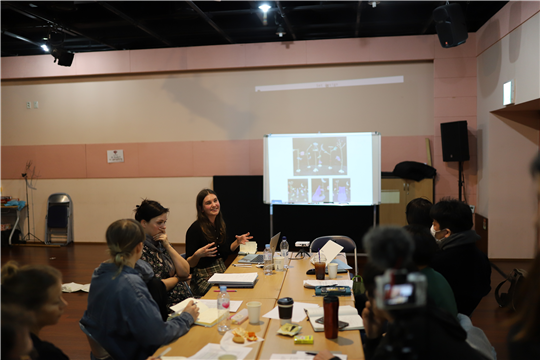
Joint rehearsal of the Korea-Sweden production in February 2020 ⓒSangsang Maru
Kim Mi-sun: ‘Ne, Ne, Ne’ constitutes season 1 of Sangsang Maru’s 3)Kordic Hit. Do you have any plan for season 2?
Eem Dong-yeol: The agreement for season 2 has been completed and we are also planning a musical. Ultimately through this project, we would like to produce three performances through international co-production. We also have a goal to strengthen the soft power of the Korean theater for children by gradually producing and distributing Korean performances for children on our own, based on our understanding of the Nordic distribution market we came to have this time. Currently, Korean production companies depend on the government’s financial support so they are not making a B2C (business to customer) sales structure. Moreover, they aren’t adding any profit model other than performances. They do have good works and repertoires but they find it difficult to localize them. Our biggest challenge is to strengthen the soft power of the Korean theater for children and to develop business models of B2B (business to business: invitation between organizations) and B2C (business to customer: sales for the audience) by going global.
I believe that in Korea, developing these two models is required to ensure the long run of good performances. My goal as the producer of this project is to make steady sellers of the Korean theater for children, which would be loved for a long time, and to share them with children around the world. I have worked on the first project with Kim Min-jung and I’m also preparing for ‘project 2.5’ with her. The new project will reflect what needs to be improved from the first project. In this way, we are willing to come up with a more developed production system and new business models together.
Kim Mi-sun: In the Korea-Sweden co-production process, have you found any points of connection and disconnection?
Kim Min-jung: We had many questions and concerns and we also had a time to look back, reflecting on what we have done since the beginning of the project. Korea’s performances for children are mainly those focused on storytelling. Even when children play, storytelling seems to be an important element. In the case of dance as well, we had to clarify the scope of dance perceived by the two countries’ performers and directors. For Swedish performers, just the pure shape of the body is good enough. Anne and I both like DV9 and we have many favorite things in common so I had high expectations, thinking, “We would be quite similar.” But once we started working together, even though we had common interests, Anne focused more on the shape of the body and I, on the connection between objets and people. I believed that these different styles would need to have synergy effects to translate into different diversities. But this doesn’t mean that different styles blend together to become similar. I wanted to keep these different styles intact while searching for things that meet each other, things that could accumulate and generate something new. Of course, the results of such work would become clear after meeting the audience and seeing their response.
Kim Mi-sun: From the very beginning of the production, you found keywords together and started from these keywords. Where did you find your inspiration and how did you develop your work based on the inspiration?
Kim Min-jung: During the creative workshop in August 2019, we found some keywords: ‘tree,’ ‘loneliness,’ ‘get lost’ and ‘refugee.’ We then started creating a work with these keywords. During the workshop in Ansan, I suggested ‘Prince in a Pastry Shop’, a picture book by my favorite Polish illustrator Joanna Concejo, and everybody loved this book. In short, we started from keywords and finally discovered a source of inspiration, the project’s stepping stone we could share in a concrete way. This was a turning point for our creative project. In other words, the four keywords were from our common language and our inspiration for the performance started during our workshop in Ansan in October 2019. The performance we are currently preparing is infused with these four keywords and the content of the picture book but these elements has been changed and transformed.
Kim Mi-sun: The keyword of your current project is ‘happiness.’ How did you find this keyword?
Kim Min-jung: For our project, we brought the space of ‘forest’ we found together in August 2019 and the word ‘happiness’ from the picture book by Joanna Concejo. We then thought, “What is ‘happiness’ in a forest?”
So we interviewed four-year-olds in Stockholm and Seoul. In both countries, the children didn’t fully understand the word ‘happiness’ but they gave more intuitive and sensitive answers. For example, one of them answered, “Happiness is a green train.” In fact, we try to unfold both sensitive and intuitive elements in our performance. What is great about young audiences is the fact that they have so many possibilities of enjoying this world and that unlike adults trapped in storytelling, they are capable of understanding what is abstract by going beyond the story itself.
Kim Mi-sun: How are you trying to infuse ‘happiness’ into your work?
Kim Min-jung: Looking back, when were were four years old, we would have been afraid, happy, strange and full of indescribable emotions. We tried to influse these emotions into our performance. Directing the work, I made efforts to look at the world from four-year-olds’ perspectives. I find myself limiting my senses as I grow older even if I may be developing my capacity to think. So in order to awaken my senses, I try to stay awake and I’m fighting for it.
Kim Mi-sun: Why did you choose four-year-olds as your target audience?
Kim Min-jung: Korea and Sweden seem to be different in dividing their audience into groups. In Korea, we have just a few age groups of audience while Sweden have very detailed groups.
Eem Dong-yeol: The production team made the decision together. The first performance I watched during the Nordic Connection was
Collaborating with the Swedish team, we thought about who our audience would be. Analyzing Korea’s audiences of the theater for children, we found out that four-year-olds need performances more than any other age group. We also believed that the audience of this age would be fit for both country’s performing arts market. So we discussed in detail. Consequently, we decided to produce a performance for four-year-old kids who are at least 36 months old. Once again, I would like to highlight the point that active government support is essential to invigorating the theater for children and dividing audiences into detailed groups.
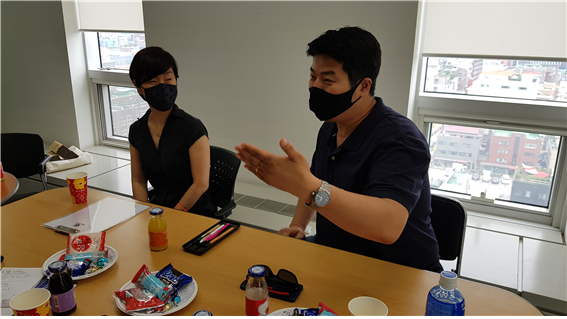
Interview with Kim Min-jung (co-director) (left) and Eom Dong-yeol (CEO of Culture Workshop Sangsang Maru (production company)) (right)
ⓒKAMS
Kim Mi-sun: Have you actually met children of this age group during the rehearsal process?
Kim Min-jung: At the end of the joint workshop in Ansan, we also had a workshop with children, in connection with theaters. But during the rehearsal in February, we couldn’t meet them due to COVID-19. Even though things haven’t worked as planned, we believe that this project could serve as a good model of co-production in the future because our production development process has been well-organized.
Kim Mi-sun: What was your understanding of four-year-olds’ characteristics for your work?
Kim Min-jung: We thought that the age of four would be a period of forming relationships with others. We also believed that these kids would be able to start storytelling and think about the relationships between them and others. We considered these elements while working.
Kim Mi-sun: How does your performance express the beginning of the kids’ relationships, storytelling and senses toward the world?
Kim Min-jung: This performance highlights senses and intuition for lines and moving shapes. It also expresses people’s relationships. But it doesn’t have a structure of storytelling (i.e. introduction, development, turn, and conclusion). That is why it is fun to watch this performance. Adults think within predetermined frameworks but children don’t have such frameworks so they can think more freely. In short, the performance absorbs and mixes everything we have done so far. Like a liquid, it mixes what we have done. But it doesn’t have just one color. Each color is kept intact while there is no border between different colors.
Kim Mi-sun: What do you want children and adults watching this performance to feel?
Kim Min-jung: I want children watching this performance to make strange shapes with paper and objects and to draw strange pictures at home. I want them to enjoy themselves by making something alone. They may not be able to express exactly what they feel through the performance but it would be great if they could do something different. On the other hand, I would like adults to let go of their perspective as the kids’ guaridans for a while. I also want them to feel these two things. First, the arts exist even without a story. Second, an art work’s different elements such as lines and music are good enough by themselves, even if they aren’t combined into one big thing. In this way, I encourage them to find ways to enjoy their lives further.
Kim Mi-sun: What is the design concept of ‘Ne, Ne, Ne’?
Kim Min-jung: It has a basic form of the Bauhaus. It is much more expressionistic. We have worked on the basis of a premise that “everything can change and everything moves.” This premise is based on transforming things rather than determining their form. This is a sentence loved by both me and Anne. “Yes, eveyrthing changes!”
Kim Mi-sun: Did you learn or realize something on the occasion of this collaboration?
Kim Min-jung: Before this collaboration, Sweden had reminded me of ‘healing,’ ‘comfort’ and ‘romance.’ But during the collaboration, I found out that the Swedish participants are very rational, logical and realistic. I had believed that the arts constitute a type of engineering, and this worked for the Swedish partners. This collaboration also served as an occasion to evoke what I had forgotten.
Kim Mi-sun: How did you come up with the title of the performance ‘Ne, Ne, Ne’?
Eem Dong-yeol: We realized that Korea and Sweden have very different non-verbal elements. For example, the phrase ‘Ne, Ne, Ne’ often used in Korea means “yes” but in Sweden, ‘Nä Nä Nä’ is used when moms tell kids “no.” So the title ‘Ne, Ne, Ne’ embodies our premise that “everything can change” and it has a new symbolic meaning that combines the opposite meanings (yes and no) in Korea and Sweden. So for overseas tours in other countries like the US, the English title of the performance will be ‘Ne, Ne, Ne’. Moreover, we videorecorded all non-verbal elements often used in Korea and Sweden. The video is used as a manual so we can use these elements with their own meanings.
Kim Mi-sun: During the project, was there anything Korean and Swedish participants said that impressed you?
Kim Min-jung: Mr. Kim Jun-seong, the music director, said “I’m so happy!” during the workshop in Ansan. After the two countries’ presentations, he said, “The two countries’ styles are too strong so the synergy of the two different parties is likely to generate something new.”
“They are happy but different. The synergy generated from this difference can take them to a new place.” That would be the beauty of collaboration. The director Kim Min-jung says that in ‘Prince in a Pastry Shop’ by Joanna Concejo, which inspired the performance, Prickly Pear, a dancer who awakens and enjoys her senses, and Not-So-Little Prince, who talks about philosophy and thoughts, appear as friends and exchange questions.
The friends who met through the Korea-Sweden Connection create a new drama with the connection of their senses and thoughts, which is essential to life. Now, they ask us this question. “What is happiness?”
The Korea-Sweden performance for children ‘Ne, Ne, Ne’ finally meets the Korean audience on the stage of Jayu Theater at Seoul Arts Center from August 19 to 23. We look forward to a day when the performance will be able to freely meet more audiences in Sweden and elsewhere.
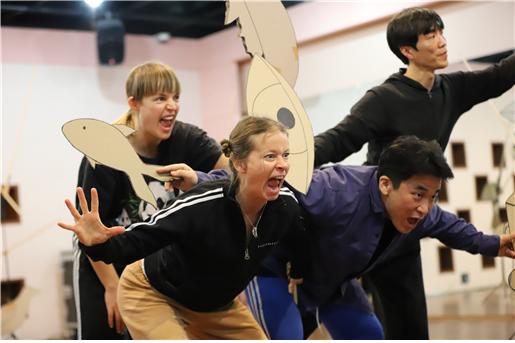
Joint rehearsal of the Korea-Sweden production in February 2020 ⓒSangsang Maru
1)Tanz Theater
It is a kind of theater dance. Using dance as its basic communication means, it realizes a theatrical stage by adding a script or small daily tools. Mostly developed by German dancer Pina Bausch, this dance performance combines dance and theatrical elements in a harmonious way.
2)Nordic Connection
Korea Arts Management Service has strived to diversify overseas market research and cooperation projects and to strengthen the capacity of professional human resources specializing in making inroads into overseas markets. This is to form a basis for the Korean performing arts to go global. As part of such efforts, KAMS has run its KAMS Connetion project since 2010. In collaboration with the Nordic organizations (including the Swedish Arts Council), KAMS is running the Korea-Nordic Connection project. The project ‘Ne, Ne, Ne’ participated in the 2017 and 2018 programs of the Korea-Nordic Connection. After that, as part of the 2019 Connection program, ‘Ne, Ne, Ne’ carried out a performance production project with Sweden’s Zebra Dans through a project supporting the development of high-quality international cooperation projects.
3)Kordic Hit
Through this project, Culture Factory Sangsang Maru co-produces three performances for children with high-quality Nordic arts organizations for children and enters the global market together from 2019 to 2022. The project was launched on the occasion of the Nordic Connection (exchange program with Nordic arts organizations run by Korea Arts Management Service from 2017 to 2018 and it is sponsored by Arts Council Korea.
Link to Information on the Performance ‘Ne, Ne, Ne’
About the Writer
Kim Mi-sun (producer) (Email: misun.kim0601@gmail.com)
Working as a producer of TYA Research Center at the National Theater Company of Korea since 2012, she has been dedicated to the production and development of new performances of the theatre for young audiences. She is trying to enjoy the process of asking interesting questions and searching for new things. For five years from 2014 to 2018, she ran the Korea-UK Theatre for Young Audiences project. She also co-produced a performance for young audiences called ‘Orange Polar Bear’in collaboration with the UK’s Birmingham Repertory Theatre and Hanyong Theatre. She started planning plays at the theater company Mokhwa Repertory Company and produced a variety of performances at PAIM Communications. Selected for the ARKO Young Art Frontier by Arts Council Korea, she has served as a producer and conducted research focused on ‘world music’ and ‘puppetry.’








 PREV
PREV
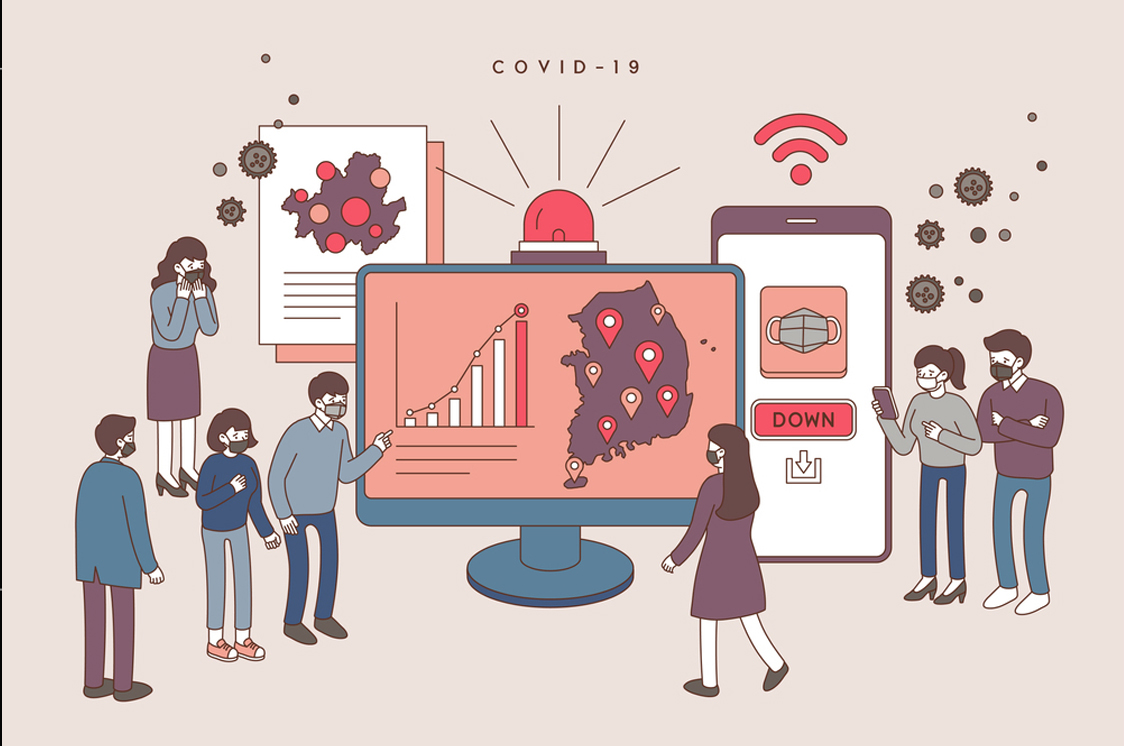

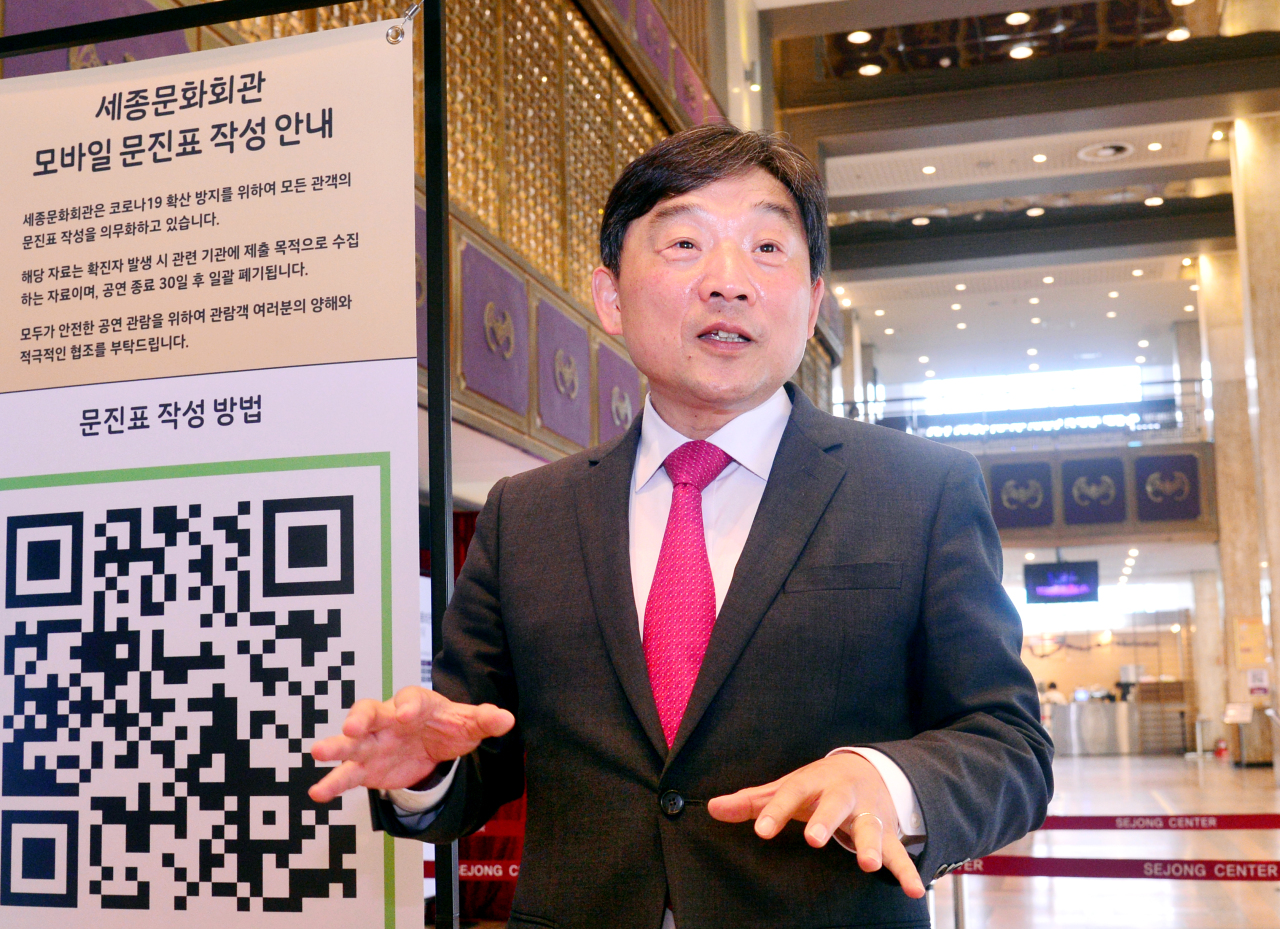
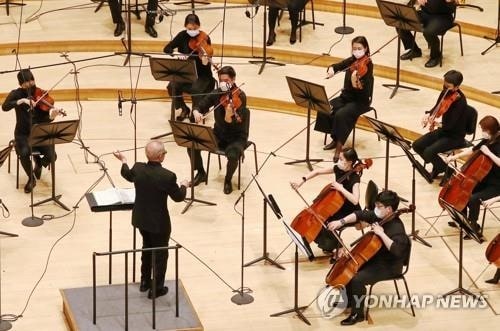

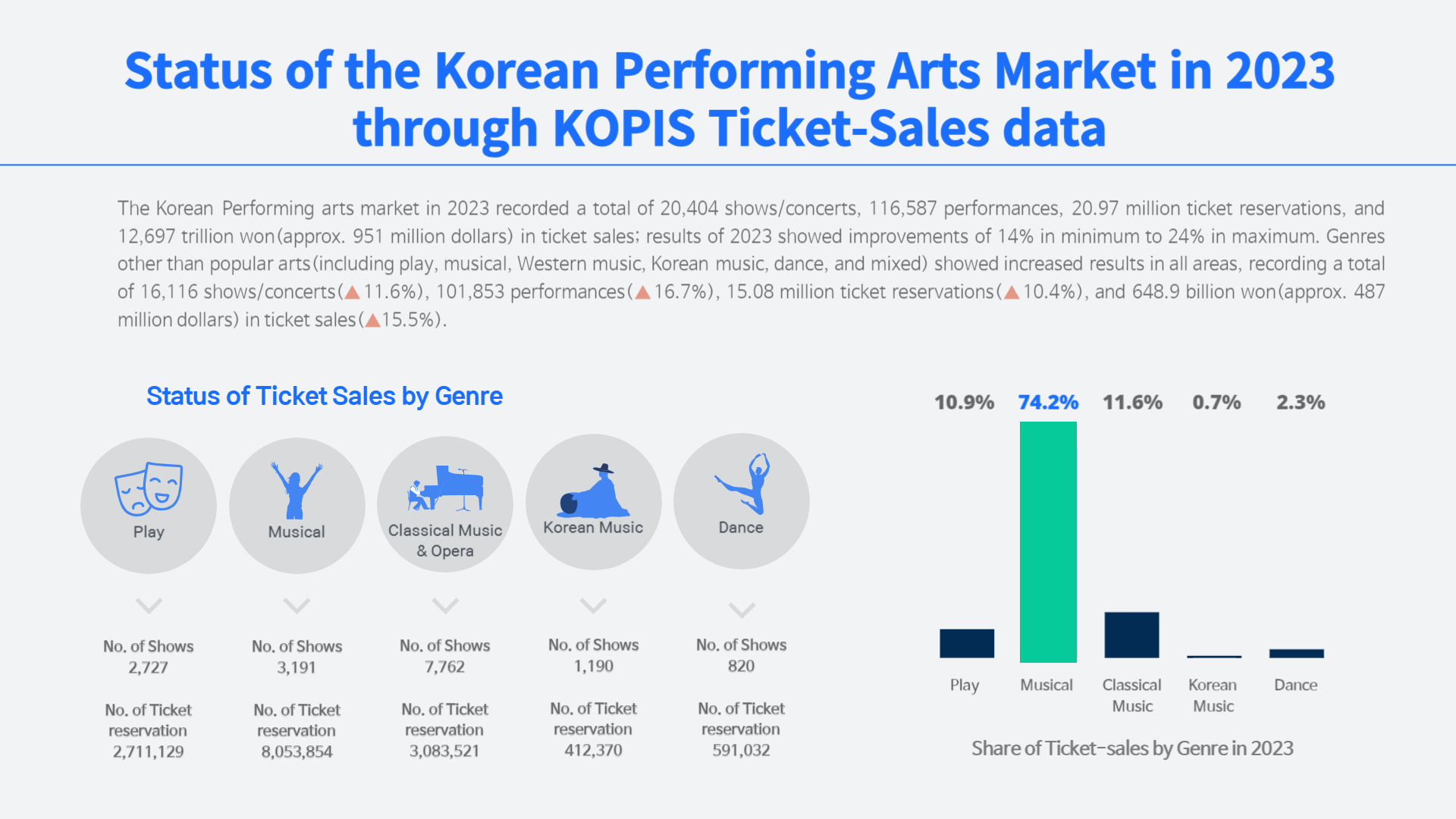
.jpg)
.jpg)
.jpg)
.jpg)











